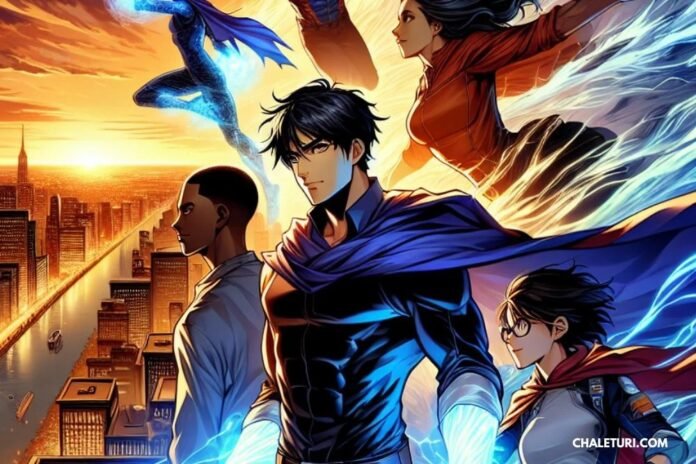Komik manga has been a staple of Japanese pop culture, captivating audiences with diverse genres and storylines. Among the plethora of titles, “Komik Hisashiburi ni Jikka ni Kaettara Otouto ga Ts Shiteta” stands out with its unique and intriguing plot. In this article, we’ll delve into the world of this manga, exploring its narrative, characters, and the reasons behind its growing popularity.
Understanding the Appeal of Komik Manga
Manga, the Japanese comic books or graphic novels, have been a significant part of the country’s publishing industry, with a vast array of genres and themes that appeal to readers of all ages. The art form has also gained international acclaim, and the term “komik manga” often refers to these Japanese comics that are translated into various languages, including Indonesian.
The Cultural Impact of Manga
Manga has had a profound cultural impact in Japan and across the globe. It’s not just entertainment; manga often reflects societal issues, personal struggles, and the complexities of human relationships. This medium has the power to resonate with readers, providing both escapism and a mirror to real life.
The Plot of “Hisashiburi ni Jikka ni Kaettara Otouto ga Ts Shiteta”
“Komik Hisashiburi ni Jikka ni Kaettara Otouto ga Ts Shiteta” translates to “When I Returned Home After a Long Time, My Little Brother Had Become a Ts.” The ‘Ts’ in the title is short for “Tsundere,” a term used in the manga and anime community to describe a character who is initially cold and even hostile towards another character before gradually showing a warmer, friendlier side.
Exploring Family Dynamics and Identity
The story revolves around the protagonist who returns home after being away for some time, only to find that their younger brother has undergone a significant change. This change isn’t just about growing up; it’s about assuming a new identity that challenges the protagonist’s preconceived notions about their sibling and how they relate to each other.
The Surprise Element
One of the key hooks of the manga is the surprise that awaits the protagonist. It challenges the reader’s expectations and piques their curiosity about how the story will unfold.
Characters and Their Development

Character development is at the heart of any compelling story, and “Hisashiburi ni Jikka ni Kaettara Otouto ga Ts Shiteta” is no exception. The manga delves into the complexities of its characters, exploring their motivations, insecurities, and the evolution of their relationships.
The Protagonist
The protagonist’s return home is marked by surprise and an ensuing journey of understanding and acceptance. Their character growth is central to the narrative as they navigate the changes in their family life.
The Tsundere Brother
The younger brother’s tsundere nature adds a layer of depth to his character. His initial coldness is a facade that gradually peels away to reveal vulnerability and the desire for acceptance from the protagonist.
Themes Explored in the Manga
Manga often tackles a wide range of themes, and “Hisashiburi ni Jikka ni Kaettara Otouto ga Ts Shiteta” is no exception. The story touches on themes of identity, acceptance, family bonds, and the complexities of human emotions.
Identity and Self-Discovery
The manga provides a narrative on the exploration of self and the courage it takes to embrace one’s true identity, especially within the family setting.
Acceptance and Understanding
Acceptance is a recurring theme as characters learn to accept each other’s changes and the realities of their evolving relationships.
Popularity and Reception
The unique premise of “Hisashiburi ni Jikka ni Kaettara Otouto ga Ts Shiteta” has garnered attention and a following. Readers are drawn to the relatable characters and the blend of humor and heartfelt moments.
Reader Engagement
The manga’s ability to engage readers with its relatable plot and characters is a testament to its popularity. The emotional journey of the characters resonates with those who have experienced similar family dynamics and personal growth.
Art Style and Presentation
The art style of a manga plays a significant role in its storytelling, and “Hisashiburi ni Jikka ni Kaettara Otouto ga Ts Shiteta” is visually appealing with its detailed illustrations that convey the characters’ emotions and bring the story to life.
Visual Storytelling
The manga uses visual cues and expressions to enhance the storytelling experience, creating a connection between the reader and the characters.
The Role of Translation in Manga Accessibility
“Komik Hisashiburi ni Jikka ni Kaettara Otouto ga Ts Shiteta” is just one example of how manga has crossed cultural and language barriers. Translations into languages like Indonesian make these stories accessible to a broader audience, contributing to the global manga fandom.
Bridging Cultural Gaps
The translation of manga allows readers from different cultures to enjoy and relate to stories from Japan, fostering a greater understanding and appreciation of Japanese culture and storytelling.
Conclusion: Why “Hisashiburi ni Jikka ni Kaettara Otouto ga Ts Shiteta” Is Worth Reading
“Komik Hisashiburi ni Jikka ni Kaettara Otouto ga Ts Shiteta” offers a refreshing take on family relationships and personal identity. Its engaging plot, relatable characters, and meaningful themes make it a standout title in the world of komik manga. Whether you’re a seasoned manga reader or new to the genre, this story is sure to capture your interest and perhaps even your heart.
As manga continues to evolve and reach new audiences, stories like “Hisashiburi ni Jikka ni Kaettara Otouto ga Ts Shiteta” remind us of the power of comics to tell rich, nuanced tales that speak to the human experience. So why not dive into this komik manga and join the protagonist on their journey of surprise, understanding, and familial love?





